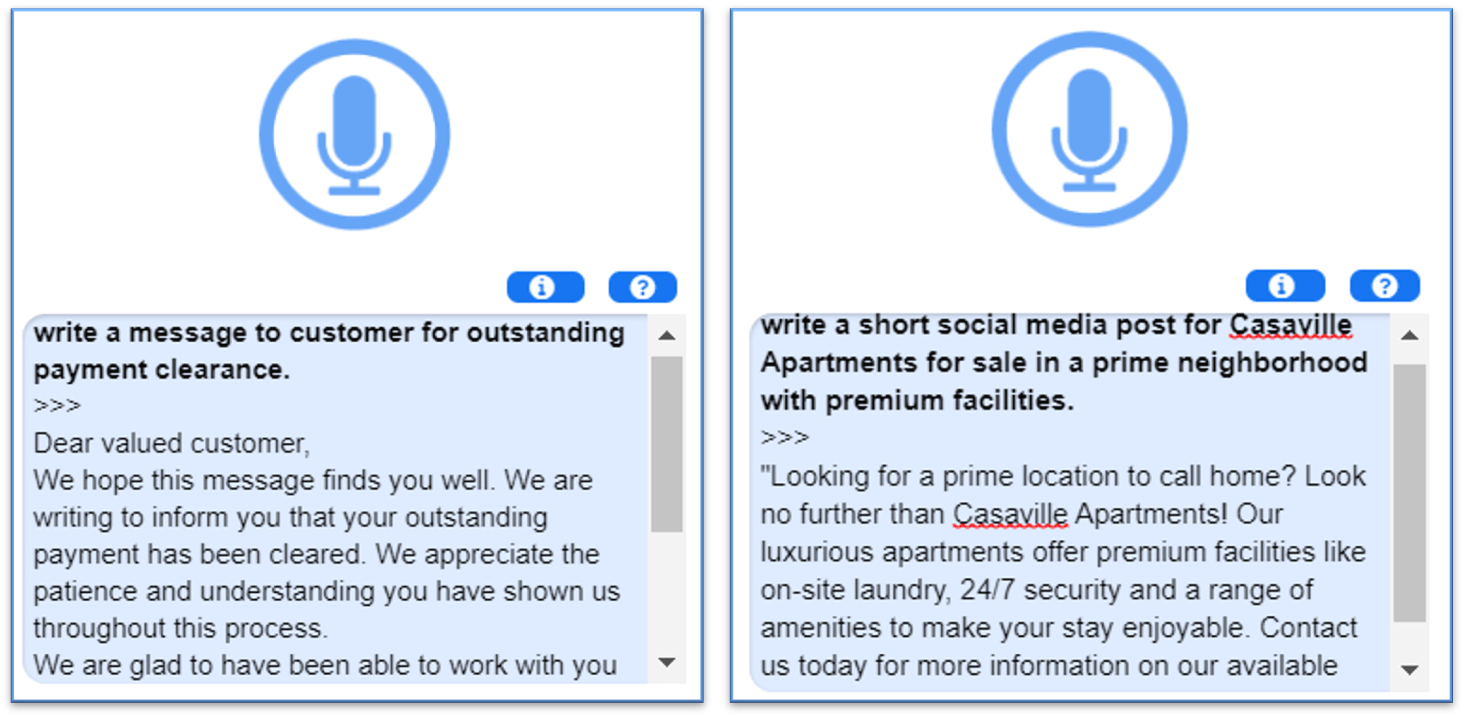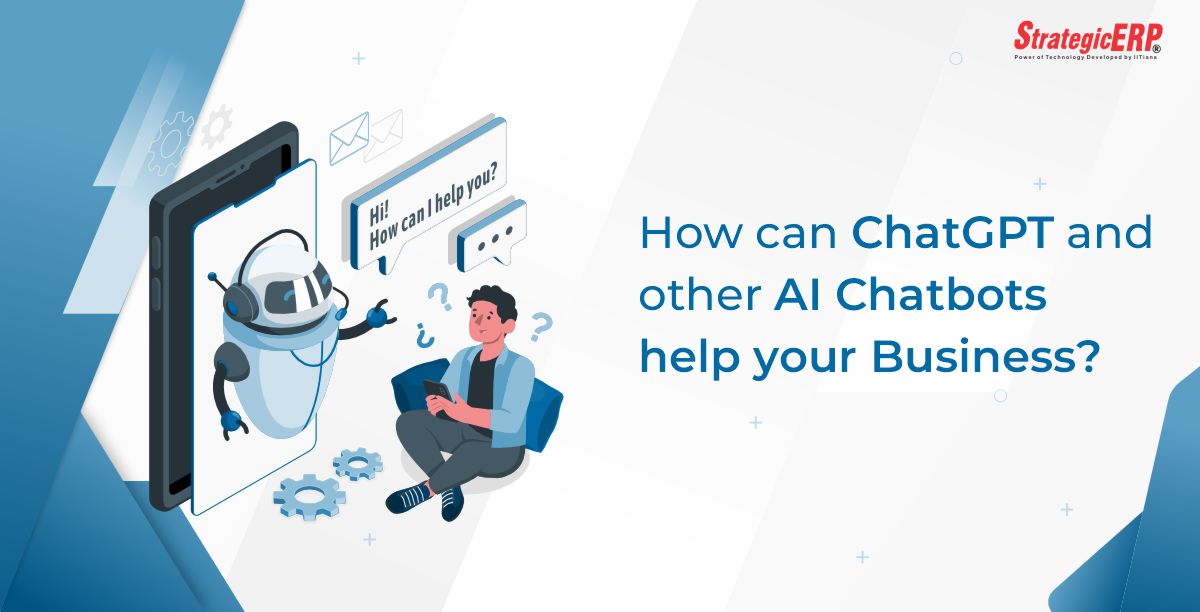How can ChatGPT and other AI Chatbots help your Business? [UPDATED]
Category : Digital Transformation
Blog posted by : Admin / 10 Apr, 2023
A chatbot is a computer program designed to simulate conversation with human users, typically through text or voice interactions. It follows a set of predefined rules and scripts to respond to user inputs.
On the other hand, an AI chatbot uses artificial intelligence (AI) and natural language processing (NLP) techniques to understand and respond to user inputs. AI chatbots can learn from previous interactions, analyze data, and adapt their responses over time to provide more accurate and personalized responses.
So, while all AI chatbots are chatbots, not all chatbots are AI chatbots. The term "AI chatbot" is used to distinguish bots that use advanced artificial intelligence technologies to provide more human-like and intelligent responses from those that rely on simpler rules and scripts.
Would you believe the introductory paragraph above was written by a machine?
ChatGPT is an innovative AI chatbot that has been developed by OpenAI. It understands various types of requests, can communicate in 90 languages, and perform a wide range of tasks for its users.
Its latest offering, GPT-4 accepts image and text inputs and has enhanced capabilities in:
- Advanced reasoning
- Complex instructions
- More creativity
Artificial Intelligence for Business
With its ability to automate repetitive tasks, the role of AI is only getting bigger in helping businesses increase productivity and efficiency. AI is also playing a major role in developing sophisticated chatbots.
In 2023, its market is projected to grow over $994 million with the number of voice chatbots rising to over 8 billion (Tidio in 2021-2022).
AI chatbots are being increasingly employed by businesses to automate certain customer relationship (CRM) and employee self-service (ESS) tasks.
For instance, generative AI in ERP systems can revolutionize employee productivity by creating personalized content instantly. The feature is powered by Machine Learning and Natural Language Programming, enabling the system to comprehend voice and text-based prompts, scan vast amounts of data and generate contextually relevant content.
Whether it is writing emails, generating property listings, drafting blogs, or creating social media posts, high-quality content plays a crucial role in attracting prospects and engaging customers.

Integrating generative AI into ERP systems helps automate content creation and can revolutionize the way businesses operate.
Human vs AI
Like most AI chatbots, ChatGPT is a language model that offers responses based on the data it has been trained on. Its ability to process complex queries and produce relevant responses will depend on the advancement of the AI technologies used.
For instance,
ChatGPT is based on the language model GPT-3 and trained on human text from the internet. Other HR chatbots can be developed using Natural Language Understanding (NLU) and dialogue management, where NLU aids the generation of relevant responses and the latter decides the next step in the conversation.
Depending on the usage, the right NLP engine needs to be selected for a bot, such as for voice commands one would need a speech recognition engine. Such bots are commonly integrated with Real Estate ERP systems as conversational tools.
The automation use-cases that bots provide, without the need for human supervision, are the reasons for their increasing adoption. So, the question arises, can AI chatbots replace humans completely? Well, read till the end to find out!
Why are Businesses Rapidly Adopting Chatbots?
Organizations large and small are using AI chatbots to enhance customer and employee experience. With it, they can:
- Be available 24/7
- Remove emotional undertones to conversations
- Streamline conversations easily
- Redirect queries easily
- Customize message in the tone of the brand
- Personalize messages for individual users
- Can be integrated with web software and mobile apps
- Built-in domain knowledge to offer better responses
- Multi-lingual and voice support available too
- Most customers prefer to chat with bots than wait for human agents
Chatbot Examples: 5 Real Use-Cases
Organizations are prioritizing providing better experiences while reducing costs at the same time.
Most common scenario for the use of bots is probably during online shopping. Potential buyers tend to enquire about the products they are browsing. The sales team can deploy bots to answer simple questions and provide other helpful information such as price, measurements and availability.
Website bot
Another common use is to answer queries or troubleshoot problems. For simple questions, buyers are not limited by the operational business hours. A chatbot for customer service can answer non complex queries any time, without human intervention.
They can double up as virtual agents that not only respond immediately but personalize their messages as well. Users can even give voice commands to enjoy a hands-free experience.
HR bot
HR departments are investing in ESS Apps which work on text as well as voice commands. The bot uses NLP to convert voice to text. Some enquiries that an employee can get answers to are leave balance, salary slip, leave application, upcoming birthdays, attendance reports and more.
WhatsApp integration of bots
Bots can also be integrated with WhatsApp or other messaging services so that a visitor can choose to continue the conversation on the chatbot UI or switch to another app.
The Benefits of Providing a Chatbot Experience
Your customers, potential buyers and employees can find answers instantly and enhance their experience.
-
Multiple conversations: Converse simultaneously with multiple users, thereby reducing wait time greatly
-
Cheaper: It is cheaper than creating another platform and hiring resources
-
Lower costs: The cost to acquire customers also decreases with the bot’s fast processing power
-
Save time: Saves employees’ time to focus on high-priority tasks
-
Self-service: Employees can access their own information
-
Increase satisfaction: It improves customer and employee satisfaction by responding immediately and answering accurately
-
Expand reach: Can reach out to more customers, thereby increasing reach
-
Instant availability: Instant resolution of simple queries
-
Dispassionate: Consistent tone of conversation, devoid of emotions
-
Increase productivity: Automates repetitive and simple tasks
Limitations: Can AI Chatbots Replace Humans Completely?
Bots are being used to improve both customer and employee experiences. To provide instant feedback, they rely on the training information fed to them. Even with advanced AI and NLP, there is a possibility of incorrect information being given out by the bot.
Instead of replacing humans, AI chatbots will continue to be employed by them to foster better relationships and automate daily tasks.
The Future of AI chatbots
Artificial Intelligence technologies will continue to advance, offering new capabilities and enhancing the chatbot experience. Currently, voice-enabled bots are on the rise due to their easy usability.
Even ChatGPT has evolved from its GPT-3 model to the newer GPT-4 model, which can learn a user’s writing style, process visual inputs, and create long-form content.
With AI chatbots set to become smarter and more user-friendly, they have become a necessity for organizations.







